How To Coach The Clean
The Clean is complex, and it’s one of the most cited reasons not to coach the lift to athletes. But most issues with the lift can be fixed with just a few coaching cues.
We’ll go over all of the major portions of the lift briefly, but first, let’s go over some basic ideas.
When coaching Olympic Lifting, you always want to start light and right. If you immediately load up the bar with someone who has never done a power clean before, their technique will be horrible and unstable. This is because the nervous system takes a while to adapt to a new movement pattern before gaining stability in motion. By starting light, you allow the athlete to adapt, and by correcting issues heavily in the beginning, you start right.
Now, how do we coach the clean?
The Set-up
If you don’t start right, you won’t end right.
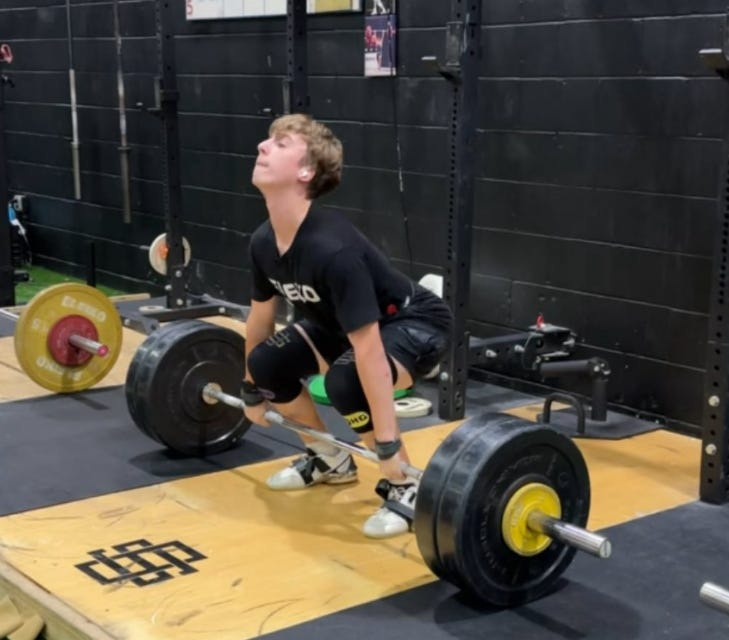
Let’s take a look at this athlete. His shoulders are over the bar. His back is tight and slightly curved, and his chest is out. His knuckles are down. His hips are slightly higher than his knees. His eyes are straight ahead. The bar is right over the middle of his foot. Feet at about hip width. These are the primary cues needed for this position.
This is how you want your athlete’s setup to look during the clean and snatch. Anything different from this is less than optimal and should immediately be fixed. If you don’t fix it, they will always end wrong. Start right, finish right.
Once the athlete begins pulling, these positions should stay the same until they pass the knee, which is when they begin to pull backward and their shoulders rise.
Above The Knee
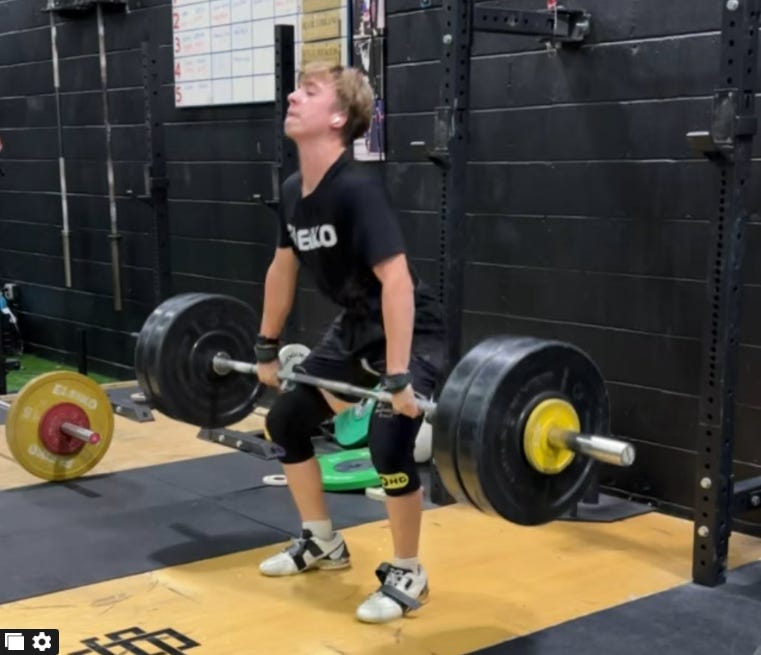
Now that our athlete has passed the hips, the shoulders begin to come back. This part of the lift is crucial. The athlete must “sweep the bar back” or “brush the thighs” with the bar. This is right before triple extension, and keeping the bar close before triple extension is crucial to producing the power needed at the power position before triple extension.
The Power Position
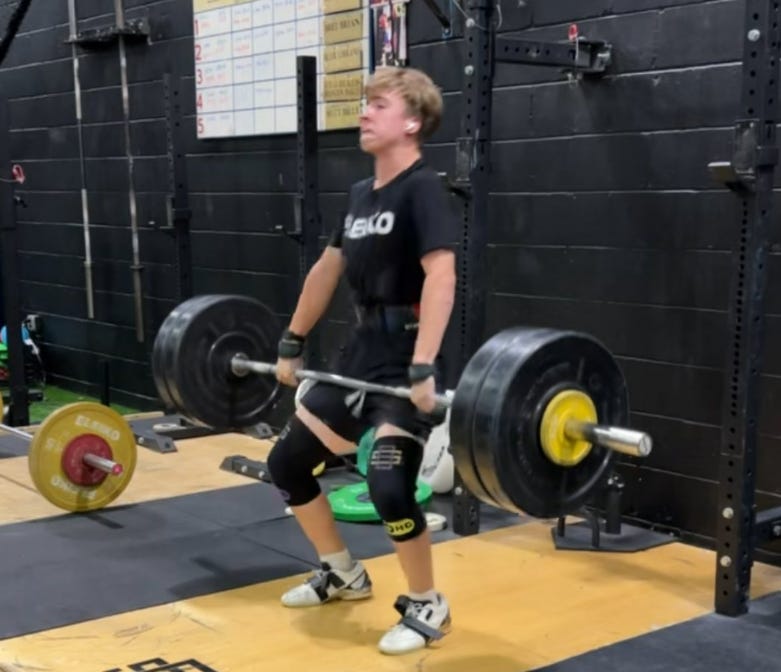
Our athlete is now in the power position. The bar is right below the pubic bone. The torso is completely upright, and the athlete is about to explode into triple extension. The bar is close, and the pressure has shifted more toward the back of the feet. Here, we want to ensure that the athlete is “sweeping that bar” as close to their body as possible.
Triple Extension
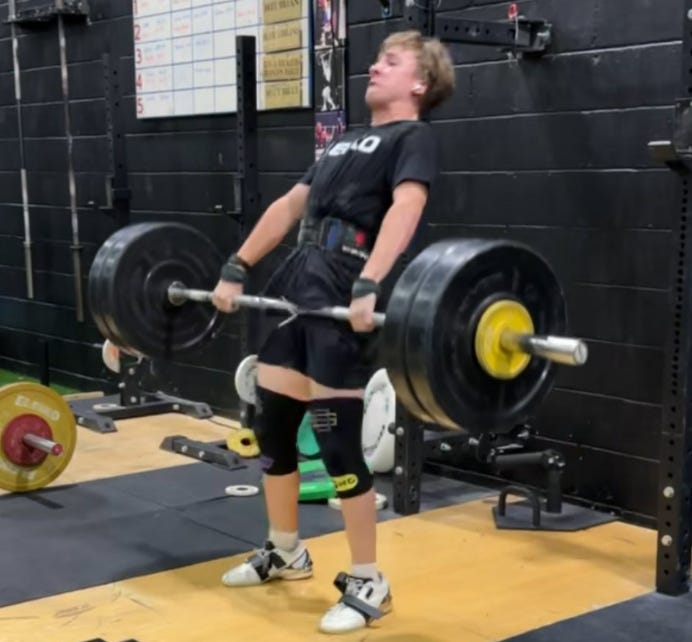
Triple extension is a sticking point for many athletes. The most common mistakes are swinging the bar out instead of up, jumping instead of simply staying on their toes, and bending too far back. The bar is close and the athlete is ready to pull underneath. At this phase, the athlete should begin pulling back and be ready to swing the elbows around to receive the bar in the front squat position. We want our athletes to “get on their toes” and to “pull under” the weight at this phase.
Receiving The Bar
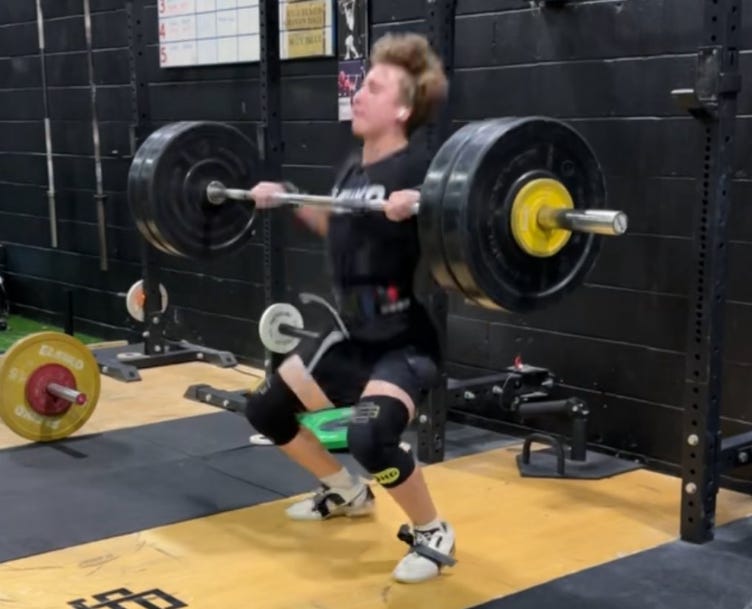
Since our athlete keeps the bar close, we can see he has no problem receiving it. He’s pulling back and swinging the elbows around to catch the bar in the front squat. He has also shifts his feet from hip width to shoulder width. Common mistakes in this position include not shifting feet, shifting feet too much, and pushing the bar forward, causing a forward jump to catch the bar. To avoid pushing the bar forward, keep the bar close. Ideally, before your athletes are lifting heavy weight, they’ve been taught to shift their feet and have practiced it over and over with light weight.
The Front Squat
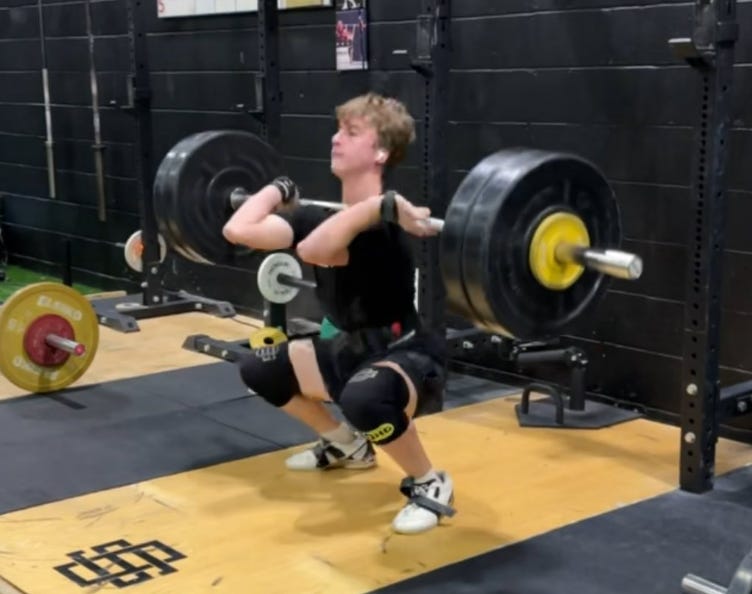
Ideally, your athlete should be receiving their clean or snatch around this position, just at about parallel. Sometimes the bar crashes and forces them into a deep squat. If that’s the case, we hope you’ve been training deep squats. From this position, the athlete receives the bar into a squat and comes back up like a normal front squat with their feet at shoulder width, and keeping the elbows high and chest out with shoulders pinched back. At this point, you just want your athlete to “keep their chest up” and push out of the bottom.
Once your athlete passes parallel, they’ve pretty much got the lift. If your athlete is not doing squat cleans and is doing power cleans, then they would stop at “Receiving The Bar” and would catch in about a quarter squat or slightly lower if the weight is very heavy.
If you’re looking for a program that incorporates principles like these, sign up for The Moffitt Method today. We make online strength and conditioning programs for high schools and colleges that get athletes stronger, healthier, and help you win more championships.
Written by Matt Bruce, 2 two-time Olympic alternate and strength coach for over a decade.